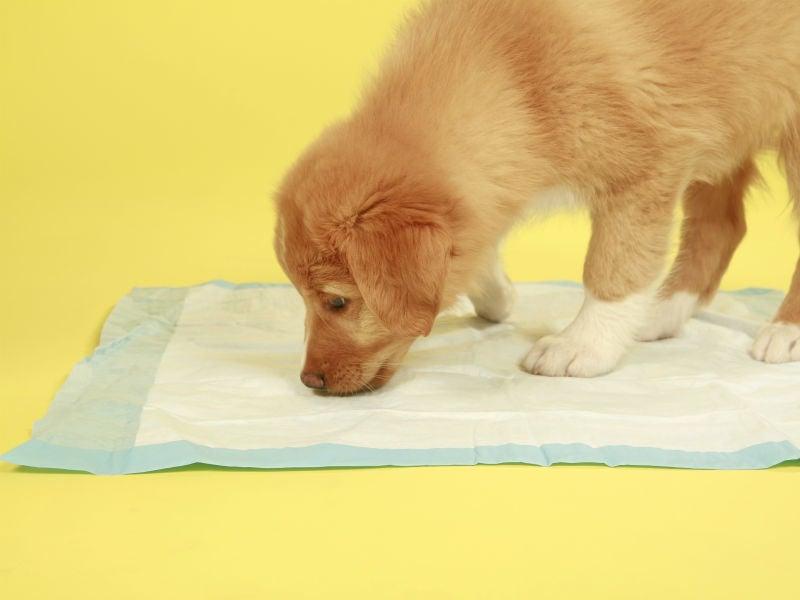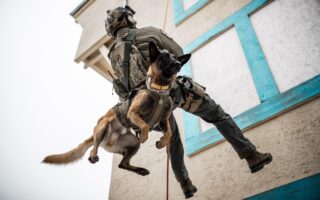Title: The Final Frontier: Navigating the Last Resort for Dog Potty Training
Introduction:
In the journey of dog ownership, few challenges evoke as much frustration and determination as potty training. While many pet parents navigate the early stages armed with patience, praise, and an arsenal of puppy pads, there comes a time when traditional methods may falter. For some, the dream of a perfectly house-trained pup seems just out of reach, leaving them to consider the unthinkable: the last resort for dog potty training. This article delves into alternative solutions, expert advice, and innovative products designed to turn your aspirational vision into reality. Whether you’re dealing with a stubborn pup or a sudden change in behavior, our exploration will equip you with the insights needed to tackle this pressing issue—because every dog deserves a chance to thrive in a home that’s as inviting as it is clean.
Table of Contents
- Understanding Common Challenges in Dog Potty Training
- Exploring Effective Last Resort Techniques for Accidents
- Creating a Positive Environment for Potty Training Success
- Maintaining Consistency and Patience in the Final Stages
- Q&A
- Closing Remarks
Understanding Common Challenges in Dog Potty Training
Potty training a dog can often feel like navigating a minefield, with various obstacles that can lead to frustration for both the pet and the owner. Some common issues that arise during this process include inconsistency in commands, where different family members use different phrases, which can confuse the dog. Additionally, dogs might struggle with the concept of needing to go outside, especially if they were previously kept indoors for long periods.
Another challenge is the dog’s natural instinct to avoid soiling their sleeping area. If their designated potty spot is too far away or uncomfortable, they may choose to hold it in, leading to accidents indoors.
Moreover, environmental factors can heavily influence a dog’s potty training success. For instance, sudden changes in the home—like a new pet or an alteration in routine—can cause setbacks. Some dogs may also exhibit anxiety in unfamiliar settings, which may discourage them from going potty outside. For those facing persistent issues, establishing a consistent potty schedule can be vital. Consider breaking down your training strategy into manageable phases:
| Training Phase | Description |
|---|---|
| Observation | Keep an eye on your dog’s behavior for signs they need to go. |
| Routine | Set a regular schedule, including meals and potty breaks. |
| Reward | Positive reinforcement helps your dog associate going outside with a reward. |
| Consistency | Everyone should use the same commands and routines. |
Exploring Effective Last Resort Techniques for Accidents
In the journey of potty training your dog, you may occasionally encounter setbacks that lead to accidents. Understanding how to handle these situations with effective last resort techniques can be pivotal in promoting positive habits. One critical approach is to implement a strict routine that coincides with your dog’s natural biological needs. Consider incorporating the following methods:
- Frequent Breaks: Take your dog outside regularly, especially after eating, drinking, and waking up.
- Positive Reinforcement: Reward your dog immediately after they relieve themselves outside to create a positive association.
- Accident Cleanup: Clean up accidents with enzymatic cleaners to eliminate odors that may attract your dog back to the same spot.
Additionally, you can employ a management strategy using relevant tools to facilitate training progress. A combination of crates and baby gates can effectively confine your dog to safe spaces while they learn proper elimination behavior. Below is a simple overview of useful tools:
| Tool | Purpose |
|---|---|
| Crate | Provides a safe space for your dog and encourages them to hold it until let outside. |
| Baby Gate | Limits access to certain areas of the house, reducing accidents in unwanted places. |
| Pads | Used as a temporary solution for indoor relief while transitioning to outdoor potty training. |
Creating a Positive Environment for Potty Training Success
Establishing a nurturing atmosphere is essential for effective potty training. Dogs, like humans, thrive in environments that are consistent and reassuring. When introducing your furry friend to the potty training process, consider the following strategies to foster a positive mindset:
- Regular Schedules: Set specific times for potty breaks to establish familiarity.
- Positive Reinforcement: Celebrate successes with treats and praise, reinforcing the behavior you want.
- Comfortable Space: Ensure the potty area is inviting and stress-free, allowing your dog to feel safe.
- Patience is Key: Remember that setbacks may occur; maintain a calm demeanor to encourage learning.
Creating a safe space for your dog is critical in minimizing anxiety and encouraging consistency. A well-defined routine and positive ambiance help dogs understand their potty needs. Consider the following elements while implementing your training method:
| Element | Description |
|---|---|
| Environment | Keep the area clean and free from distractions. |
| Consistency | Use the same phrase for potty breaks to create associations. |
| Observation | Watch for signals that your dog needs to go, such as circling or sniffing. |
Maintaining Consistency and Patience in the Final Stages
In the crucial final stages of your dog’s potty training journey, maintaining consistency is essential. This means sticking to a routine that your furry friend can rely on, clearly signaling when and where they should do their business. Establish a specific schedule for bathroom breaks, typically after meals, playtime, and first thing in the morning. Reinforce this routine with a loving and encouraging energy, ensuring you are consistently directing your pup to the same outdoor spot, helping them associate that area with bathroom time. Here are some key points to keep consistent:
- Regular potty breaks at set times.
- Clear and positive commands.
- Using the same spot for potty training.
- Immediate praise when successful.
Patience is equally important during these final stages. Remember, accidents will happen, and it’s crucial to address them without frustration. Instead, focus on redirecting your dog with even more encouragement and understanding. Celebrate their progress, no matter how small, and remain committed to the training process. Creating a calm environment can significantly decrease your pup’s anxiety, allowing them to feel secure in their newfound routine. To monitor your pup’s progress, consider tracking their successes and mishaps in a simple table:
| Date | Successful Potty Breaks | Accidents |
|---|---|---|
| Day 1 | 3 | 1 |
| Day 2 | 5 | 0 |
| Day 3 | 4 | 1 |
By following a consistent routine and fostering an atmosphere of patience and encouragement, you will witness your dog becoming more reliable in their potty habits over time. Let your love and commitment shine through as your pup transitions into this new chapter, and don’t forget to enjoy the journey together!
Q&A
Q: What are some common challenges dog owners face with potty training?
A: Many dog owners encounter various hurdles when potty training their furry companions. These challenges can include inconsistent routines, accidents indoors, lack of understanding from the dog, or simply choosing the wrong training methods. Owners may also struggle with reinforcing good behavior or differentiating between different dog personalities and their respective training needs.
Q: When should a dog owner consider looking into “last resort” potty training methods?
A: Owners should explore last resort potty training methods when they’ve exhausted traditional techniques without success. This might include persistent accidents despite a consistent schedule, chaotic environments that disrupt training, or if the dog seems resistant or confused about the process. It’s important to recognize when the conventional approaches aren’t yielding results, and the need for alternative strategies arises.
Q: What are some last resort methods for potty training a dog?
A: Some last resort methods might include crate training, where a dog learns to hold their bladder while confined in a safe space, or using potty pads as a transition tool if the outdoors are overwhelming. Additionally, employing professional trainers or behaviorists can provide customized strategies. In some cases, adjusting the dog’s diet or schedule, or even seeking veterinary advice if a medical condition is suspected, can be considered.
Q: How can crate training assist in last resort potty training?
A: Crate training can be an effective last resort as dogs typically avoid soiling their sleeping areas. By introducing the crate gradually and ensuring it’s a positive space, owners can help their dogs learn to hold it until taken outside. Proper crate timing is crucial—too long can lead to anxiety and accidents, while too short may not reinforce the habit.
Q: Should I consider medical issues if my dog isn’t responding to potty training?
A: Yes, it’s advisable to consult with a veterinarian if your dog is not responding to potty training efforts. Underlying health issues like urinary tract infections, intestinal problems, or anxiety can impact a dog’s ability to control their bladder or bowels. A thorough check-up can rule out these issues and lead to a more effective potty training plan.
Q: What role does consistency play in last resort potty training methods?
A: Consistency is paramount, even in last resort methods. Establishing a regular routine helps dogs understand expectations. Whether it’s consistent potty breaks, similar commands, or even the location where they are taken to relieve themselves, consistency breeds familiarity and stability—key elements in reinforcing desired behavior.
Q: Are there any tools or products that can help with last resort potty training?
A: Absolutely! There are various products designed to aid in potty training. Enzyme cleaners can eliminate odors from previous accidents, making it less likely for dogs to revisit the same spot. Potty pads with attractants can encourage dogs to use them indoors as backups. Additionally, boundary training systems or training aids can serve as encouragement and guidance in the process.
Q: How long does it typically take for last resort methods to be effective?
A: The time it takes for last resort methods to yield results can vary greatly, depending on the dog’s age, temperament, and previous training experience. Some dogs may adapt within a few days, while others might need weeks of patience and persistence. Regular reinforcement and adjustments to the training regimen will help gauge progress and make necessary changes.
Q: Can I still use positive reinforcement with last resort methods?
A: Absolutely! Positive reinforcement remains a powerful tool, regardless of the method being employed. Treats, praise, and affection should be consistently used to reward successful outside potty breaks or the correct use of pads. Celebrating small victories encourages motivation and creates a positive association with the desired behavior.
Q: Is it ever too late to start potty training using last resort methods?
A: It’s never too late to begin potty training; dogs of all ages can learn. While younger pups may adapt more quickly, adult dogs can still acquire good habits with patience and understanding. Tailoring your approach to the dog’s specific needs and history can make a difference, proving that new beginnings are always possible.
Closing Remarks
As we wrap up our exploration of last-resort strategies for dog potty training, it’s essential to remember that patience and understanding are at the heart of any successful training journey. While these methods might be unconventional or even a bit challenging, they can pave the way to a happier, healthier living situation for both you and your furry friend.
Every dog is unique, and with the right approach, even the most stubborn of learners can make impressive strides. Whether you choose to implement a stricter schedule, invest in high-quality training aids, or enlist the help of a professional, take solace in knowing that you’re not alone on this path.
Ultimately, the bond between you and your dog thrives on communication and trust. As you embark on this last resort, remember that every step forward, no matter how small, is a victory worth celebrating. With persistence and love, even the most challenging potty training hurdles can become opportunities for growth, forging a deeper connection with your beloved canine companion. Here’s to many successful outings ahead!



